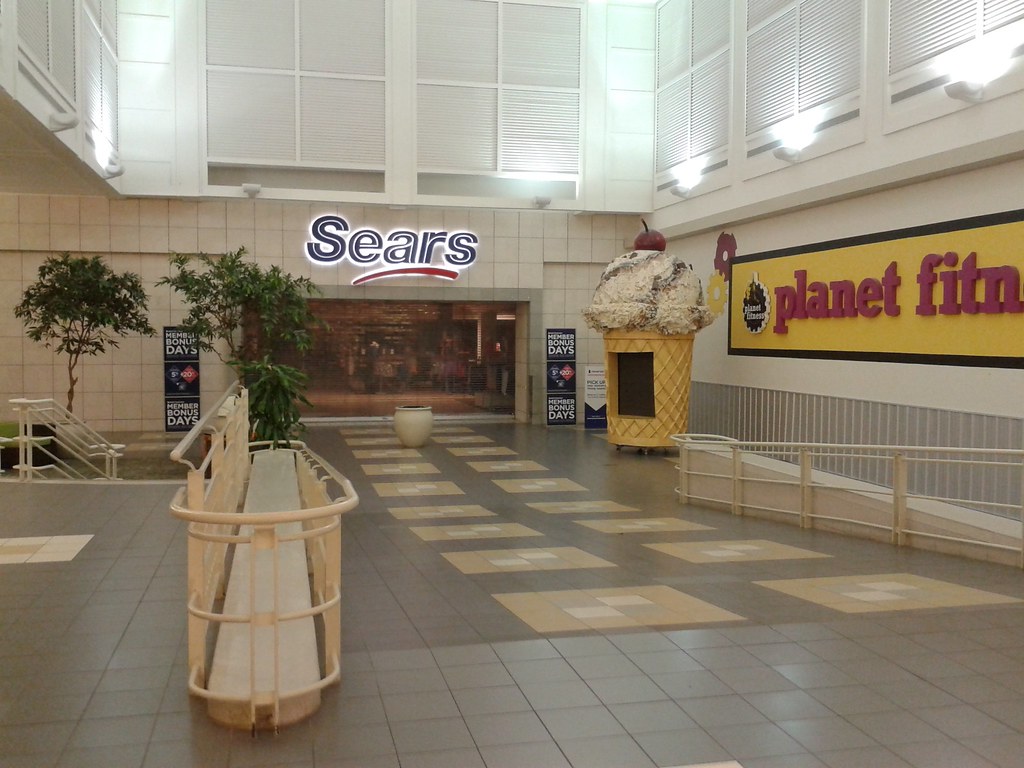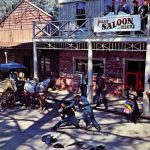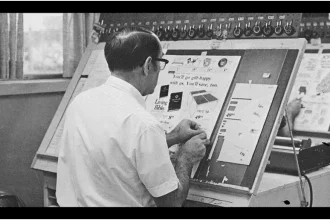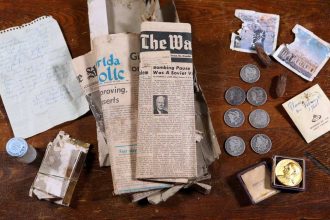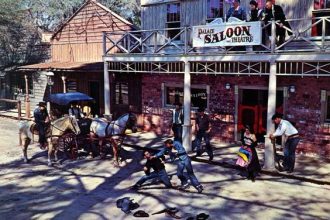Photo Essay: The Final Afternoon
On a warm Saturday in early spring, the last Sears at Fashion Square Mall in Orlando closed its doors for good. The atmosphere was a mix of nostalgia, quiet melancholy, and curiosity. Shoppers wandered the aisles, not necessarily to buy, but to say goodbye. The fluorescent lights flickered over empty display cases and stripped shelves. The once-bustling electronics section stood silent, its TVs dark. The garden tools were gone, the clothing racks sparse. Employees in blue vests moved slowly, some with smiles, others with visible sadness. A few customers paused to take photos near the iconic red logo at the entrance, now partially covered by a banner reading “Thank You, Orlando.”
The store, which had been a fixture since the mall opened in the early 1980s, was more than a place to shop—it was a time capsule. For decades, families came here to buy school clothes, Christmas gifts, and appliances for new homes. The smell of new fabric, the hum of washing machines on display, the occasional cry of a tired toddler in the toy department—these were the sensory markers of a generation. Now, the echoes of that past reverberated through the near-empty halls.
Outside, the parking lot was less crowded than in its heyday, but still dotted with loyal customers making one last trip. A man in his 60s bought a single light bulb—“because it’s the last one I’ll ever get from Sears,” he said. A young mother brought her daughter to see where she bought her first crib. “I wanted her to know,” she explained. “Places like this don’t exist anymore.”
The entrance on the last day, with farewell signage
Stripped shelves in the home goods section
A longtime employee thanks customers
As the clock neared 8 PM, the mood shifted. A small crowd gathered near the front. Employees lined up by the door. At exactly 8:00, the manager announced the store was closed. No dramatic music, no speeches—just a simple, “Thank you for shopping at Sears.” The lights dimmed. The doors locked. And just like that, a chapter ended.
Mini Oral History: Memories from the ’80s
We reached out to readers who remembered Sears at Fashion Square Mall in its prime. Their stories paint a vivid picture of what the store meant to Orlando families during the 1980s.
“I remember coming here every August with my mom. She’d get my school clothes from Sears—those Toughskins jeans were indestructible. I hated them at the time, but now I miss that feeling of being prepared. We’d always stop at the snack bar after and get a corn dog. That was our ritual.” — Linda M., Orlando, age 54
“My dad worked at the Sears auto center. I used to wait for him in the toy department, playing with the demo video games. I got to test-drive the latest Atari. One time, I convinced him to buy me a remote-control car. I still have it in my garage.” — James T., Winter Park, age 48
“We bought our first washer and dryer here in 1983. Paid in installments. The delivery guys brought it right into our little apartment on Curry Ford. That machine lasted 27 years. I cried when we had to throw it out.” — Dolores R., Pine Hills, age 71
“Sears had the best Christmas displays. The model train setup in the middle of the toy section was magical. My parents would bring me every weekend in December. I believed Santa actually lived in the back room.” — Marcus L., Altamonte Springs, age 41
These memories reflect a time when department stores were community hubs. Sears wasn’t just a retailer—it was a destination, a shared experience, a backdrop to milestones both big and small. The store hosted school photo days, appliance workshops, and even sewing classes. It was a place where generations met, where parents taught children how to shop wisely, and where people trusted a brand with their most important purchases.
1984 Sears Circular: A Glimpse into the Past
Thanks to collector and longtime Orlando resident Robert K., we’ve obtained a scanned copy of the Sears circular from July 1984—specifically for the Fashion Square Mall location. The 24-page booklet is a treasure trove of 1980s consumer culture: tube TVs, corded phones, polyester fashions, and appliances with dials and knobs.
Highlights include a 19-inch console TV for $299.99, a Kenmore washer-dryer combo for $649, and boys’ Toughskins jeans for $12.99. The toy section features Cabbage Patch Kids at $24.99 and a Casio keyboard for $79. The back page advertises the Sears Charge Account—“Shop now, pay later with easy monthly payments.”
Page from the July 1984 Sears circular for Fashion Square Mall
“Looking at this brings back so much,” said Robert. “We didn’t have the internet, no comparison shopping. You trusted Sears. If it was in the circular, it was good. My mom planned her whole month around these pages.” The circular also includes local details: store hours, phone number, and even a map of the mall with Sears highlighted. It’s a snapshot of a pre-digital era, when shopping was tactile, deliberate, and personal.
Before and After: Entrance in 1984 vs. 2023
The transformation of the Sears entrance at Fashion Square Mall tells a story of changing times. Use the slider below to compare the vibrant 1984 facade with the boarded-up structure in 2023.
In 1984, the entrance was wide, welcoming, and brightly lit. Glass doors, bold red lettering, and colorful banners advertised back-to-school deals and summer savings. Families streamed in and out. By 2023, the same entrance is obscured by a temporary demolition fence covered in generic construction warnings. The sign is gone. The windows are covered. The only movement is the wind catching the plastic sheeting.
This visual contrast underscores the broader shift in American retail. Malls that once thrived are now struggling. Anchor stores like Sears, once the heart of shopping centers, have become liabilities. Fashion Square Mall plans to redevelop the space into mixed-use retail and residential units. While progress is inevitable, many wonder what is lost when shared spaces vanish without ceremony.

